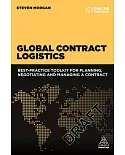In the aftermath of the recent financial crisis, the federal government has pursued significant regulatory reforms, including proposals to measure and monitor systemic risk. However, there is
much debate about how this might be accomplished quantitatively and objectively—or whether this is even possible. A key issue is determining the appropriate trade-offs between risk and reward
from a policy and social welfare perspective given the potential negative impact of crises.
One of the first books to address the challenges of measuring statistical risk from a system-wide persepective, Quantifying Systemic Risklooks at the means of measuring systemic risk
and explores alternative approaches. Among the topics discussed are the challenges of tying regulations to specific quantitative measures, the effects of learning and adaptation on the
evolution of the market, and the distinction between the shocks that start a crisis and the mechanisms that enable it to grow.





















